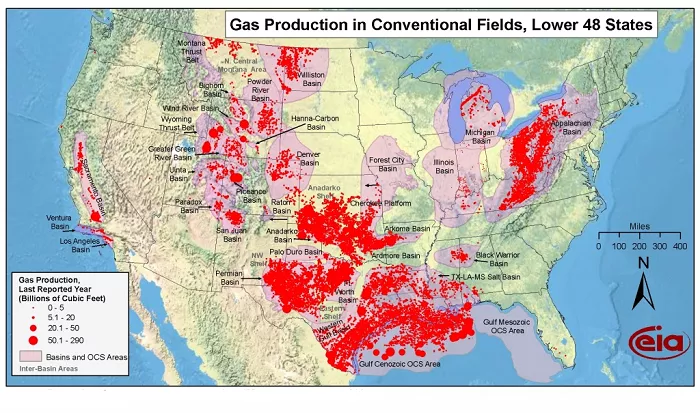Texas, often referred to as the “Lone Star State,” has a rich history intertwined with oil production. Among its numerous oil fields, the Permian Basin stands out as the largest and most prolific. Located in West Texas, the Permian Basin has been a cornerstone of the state’s economy and energy production for decades.
The Permian Basin, spanning approximately 250 miles wide and 300 miles long, covers parts of West Texas and extends into southeastern New Mexico. It is one of the most significant oil-producing regions globally, with estimated reserves exceeding 46 billion barrels of oil. The basin’s development has not only shaped Texas’s economy but has also played a crucial role in the United States’ position as a leading oil producer.
Discovery and Development
The Permian Basin’s potential was first recognized in the early 1920s. However, it wasn’t until the 1940s that significant commercial oil production began. The discovery of the Spraberry Trend in the Midland Basin portion of the Permian further cemented the area’s importance. The Spraberry Trend, covering approximately 2,500 square miles, has been a major contributor to the basin’s overall production.
Key Developments
- 1940s: Initial commercial oil production commenced.
- 1950s: Technological advancements allowed for deeper drilling, accessing previously unreachable reserves.
- 1970s: Enhanced oil recovery techniques, such as water flooding, were introduced to maintain production levels.
Geography and Geology
The Permian Basin is divided into several sub-basins, with the Midland Basin and the Delaware Basin being the most prominent. The region’s geology consists of multiple stacked oil-bearing formations, including the Spraberry, Wolfcamp, and Bone Spring formations. These formations vary in depth and thickness, offering diverse drilling opportunities.
Economic Impact
The Permian Basin has been a significant economic driver for Texas and the United States. In 2024, Texas’s oil production surpassed 2 billion barrels for the first time, with the Permian Basin accounting for a substantial portion of this output. The region’s oil and gas industry supports hundreds of thousands of jobs, from drilling and production to transportation and refining.
Employment and Industry Growth
- February 2025: Texas added 1,900 upstream oil and gas jobs, marking the second consecutive month of growth in the sector.
- The Permian Basin’s growth has attracted numerous oil and gas companies, leading to increased investments and technological innovations.
Environmental Considerations
While the Permian Basin’s oil production has bolstered the economy, it has also raised environmental concerns. Issues such as water usage, land degradation, and greenhouse gas emissions are ongoing challenges. Companies and regulators continue to work towards sustainable practices to mitigate these impacts.
Recent Developments
In recent years, the Permian Basin has seen increased interest from both domestic and international companies. For instance, Diamondback Energy’s negotiations to acquire Double Eagle, a significant producer in the Midland area, highlight the basin’s continued attractiveness.
Technological Innovations
Advancements in drilling technologies, such as hydraulic fracturing and horizontal drilling, have unlocked previously inaccessible reserves. These innovations have led to increased production efficiency and reduced costs.
Challenges Ahead
As the Permian Basin matures, producers face challenges related to resource depletion, infrastructure constraints, and market volatility. Addressing these issues requires continued investment in technology, infrastructure, and workforce development.
Conclusion
The Permian Basin’s significance cannot be overstated. Its vast reserves and continuous production have played a pivotal role in shaping Texas’s economy and the broader U.S. energy landscape. As the industry evolves, balancing economic benefits with environmental and social responsibilities will be crucial for the region’s sustainable development.

